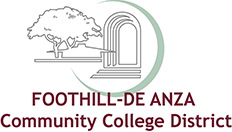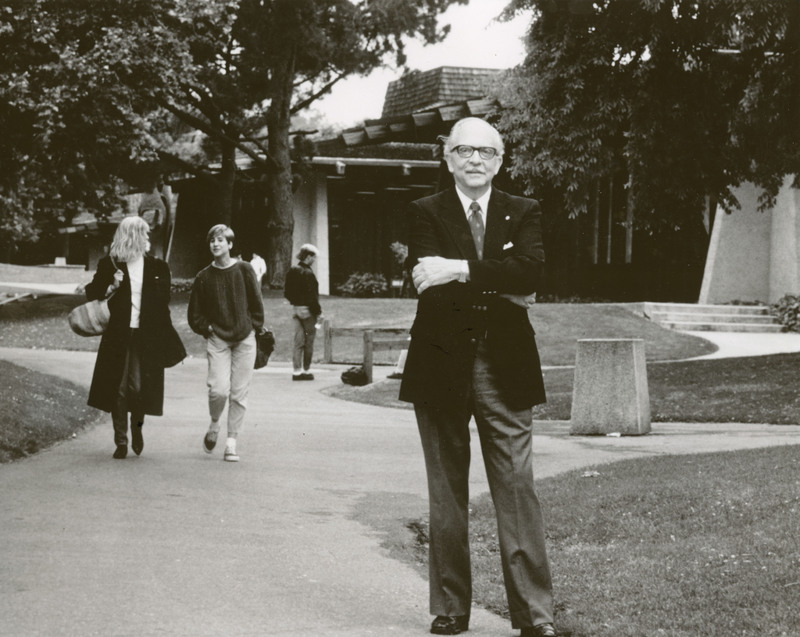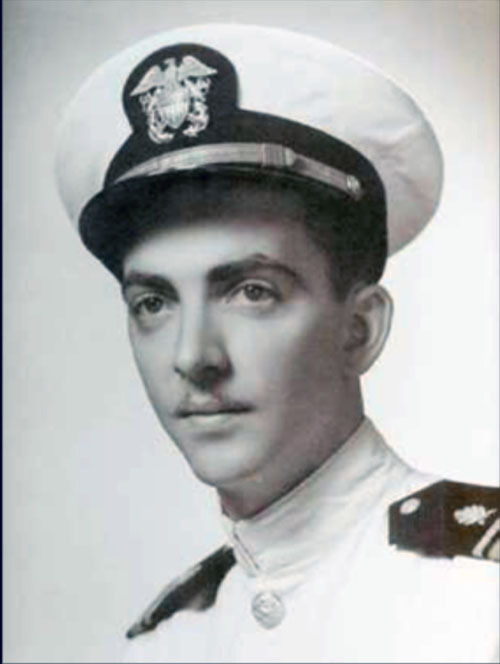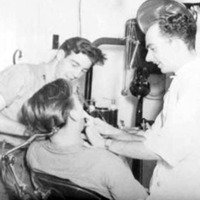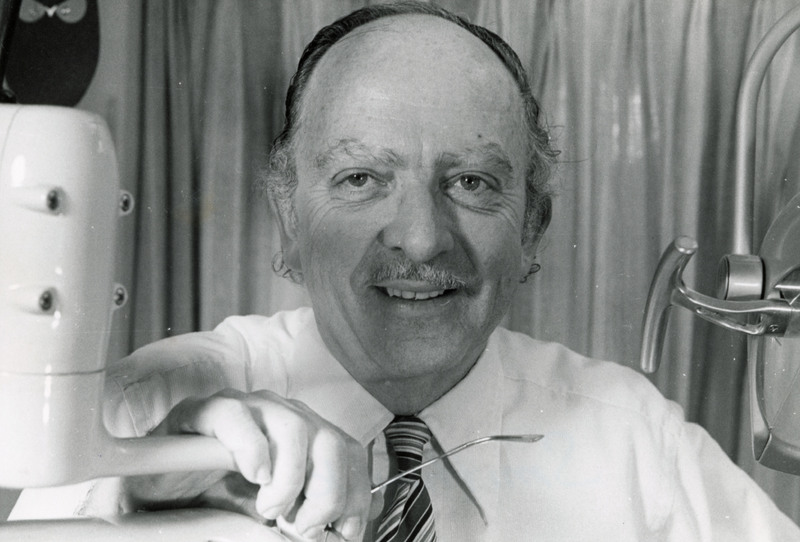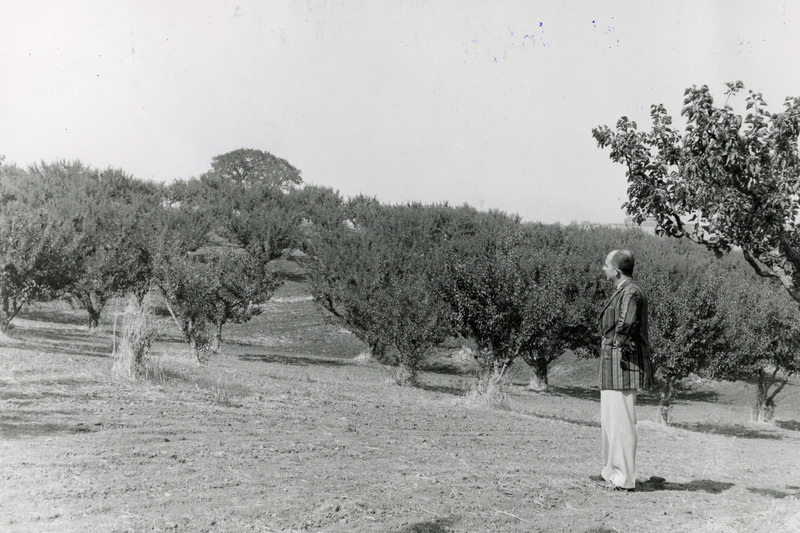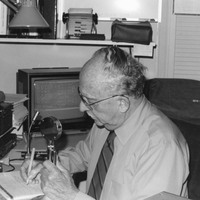Dr. Robert C. Smithwick
Dr. Robert. C Smith, hailed as the founding father of Foothill, was appointed to the interim board of trustees for the newly formed Foothill Junior College District in January 1957. He was elected to the permanent board in July 1957 where he was elected president by his colleagues. As presdient of the board, he got the first capital bond passed, chose the site, hired the architect, and a year later purchased the site for De Anza. That was just in the first three years. Serving on the board for 34 years, Dr. Smithwick and his board colleagues set the standard for excellence and innovation that the Foothill-De Anza Community College District is renowned for today.
"He always struck me as the 'Capital F' founder," said Ray Bacchetti, who served on the board of trustees at a later date. Smithwick had both the vision and practicality, and the ability to wrangle the critics and experts while trying to execute the goal." Patch.com April 23, 2013
Robert Clark Smithwick, D.D.S. was born December 21, 1920, in Portland Oregon. His father, Richard Allen Smithwick was an American Protestant minister and a missionary. His mother, Catherine Clark, was a registered nurse. When Dr. Smithwick was three months old his parents’ missionary work moved the family to Udhna, a small village outside the city of Surat in India, to teach. He spent his first seven years in India where he was homeschooled by his mother and Hindi was his first language. During their tenure in India his parents built a dispensary, known as a clinic in the United States, and started a school. Even at his young age, this time in India influenced Dr. Smithwick in the way he viewed the importance, and impact, of public service as a way of life. An influence that would lead him to a life of public service for several different causes, most notable his 34 years with the Foothill-De Anza Community College District (FHDA).
In 1928, when the family returned to the United States his father continued his ministry work, first in Northwest Washington state and then in 1932, the family moved to LaGrange, Illinois a suburb of Chicago. Enrolling in formal school for the first time when he was eight years old, Dr. Smithwick quickly advanced and completed first through eighth grade in six years and then graduated from high school in three years. It was at his high school, Broadview Academy, where Dr. Smithwick met his wife Aileen Lois Russell. The two would marry on November 18, 1943, in Hillsdale Illinois and had two children. High school sweethearts, they were together until Aileen passed in 2003.
After graduating high school, Dr. Smithwick attended Andrew’s University in Michigan taking pre-med courses. With World War II coming on, and being of draft age, he was anxious to get through school before he went into military service. If he switched to dentistry, where he had already completed most of the requirements, his military service could be deferred until after he completed his studies. He entered the University of Illinois Dental School in 1941 and completed the four-year course in approximately two and a half years.
In his senior year of dentistry school, Dr. Smithwick joined the Navy’s V-12 program which allowed students in high-demand areas, like dentistry, to enlist and remain as apprentice seamen until they graduated where, with the right discipline, they would get a commission. Upon graduation, he was handed his commission and sworn in as lieutenant junior grade (Lt. j.g.).
His first assignment was to Great Lakes Naval Training Station in the spring of 1944. The war was at its peak. To help prepare young recruits to go overseas, his job was to “get their mouths in shape so they wouldn’t have dental emergencies overseas” (Foothill-De Anza Oral History Program Interview with Dr. Robert C. Smithwick, 1995, p. 32). After a few months he was assigned to the U.S.S. Montrose, an APA-212 Attack Transport Auxiliary ship to bring troops to the United States the Pacific.
After the war Dr. Smithwick passed the state boards for his Illinois license and started practicing dentistry on the north side of Chicago. Soon Dr. Smithwick and Aileen, who was working as a nurse, realized the Chicago lifestyle was not for them. In 1948, he took a position as a dental officer with the Bureau of Indian Affairs in Nevada, serving primarily school-aged children, where their lack of access and education when it came to oral hygiene would be another catalyst driving Dr. Smithwick's future public service. After two years, the Indian Health Service merged with the U.S. Public Health Service leaving Dr. Smithwick and Aileen with a choice to be commissioned, possibly to Alaska, or move into private practice. They decided to move to California where his brother Neil, who was also a dentist, had a private practice in Sunnyvale, California. Neil handled general dentistry and after his experience with the Bureau of Indian Affairs, Dr. Smithwick focused on pediatric dentistry. He ran his dental practice in Sunnyvale until he retired in 1983.
During his early years in private practice, Dr. Smithwick started to engage more in public service. First through professional associations like the Santa Clara County Dental Society where he served as president in 1957 then on to other local organizations such as the Sunnyvale Community Council and the County of Social Planning Council (both of which would later evolve into the United Way). He was active in the development of El Camino Hospital when it first started in 1956. As a result, people would often seek him out for support and input. In 1955, two board members from Fremont High School District approached Dr. Smithwick to run for a seat on their board against an incumbent who had become out of touch with the needs of the teachers and students. Taking a moment to learn how high school boards operate, he had no experience in this area, he said yes to the opportunity, ran for election and won. He would serve on the Fremont High School District board for ten years until he moved out of the service area.
Parallel to Dr. Smithwick’s rise in public service, Sunnyvale and the surrounding area was experiencing significant growth. During his tenure on the board for the Fremont High School District, four high schools were built and there were plans for several more. Public colleges and universities in the area were limited leaving students with few options. San Jose State University was filling up quickly and the two local community colleges, San Jose City College and San Mateo Junior College, were not close in proximity to serve students in their service area. In 1956 Dr. Smithwick was approached by Dr. Henry Gunn, superintendent of Mountain View Los Altos High School District, about the possibility of proposing a junior college in the area. In January of 1957, when the Foothill Junior College District was established, in large part due to his background with the Fremont High School District and the development of multiple high school campuses, Dr. Smithwick was appointed to the interim board by Dr. O.S. Hubbard, Santa Clara County Superintendent of Schools. He was permanently elected to the board in May of 1957, serving as the first board president. He would serve as president for another nine terms and remained on the board until his term ended December 31, 1991 after losing a bid for reelection.
During his tenure with the Foothill-De Anza Community College District (FHDA), Dr. Smithwick was instrumental shifting the way the students, and the community, viewed community college.
"People didn't understand much in those days about junior colleges. We wanted to prove to them that we could be as good or better than any of the good four-year schools in terms of quality of education. Today people take it for granted, but in those days a lot of high school seniors didn't even think about going to college. They just went to work. We wanted to encourage them to go to college". Palo Alto Online, March 25, 2013
Much like his academic career, Dr. Smithwick and the new board didn’t let traditional timelines and barriers to progress hinder their objective to make Foothill Junior College an educational model for all junior colleges. Within months of establishing the district, the board secured a temporary facility so classes could start in fall of 1958; developed a plan, secured funding and purchased land to build a new campus; and selected the first superintendent, Calvin Flint, to lead the college. Accreditation, something normally awarded after the first class graduates, was awarded five months after the college opened.
In addition to his service to FHDA, throughout his life Dr. Smithwick remained active in community service. As an amateur ham radio operator, a skill he learned in high school, Robert “Smitty” Smithwick — call sign W6CS — would spend evenings relaying messages during natural disasters such as sinking of the cruise ship Prinsendam off the coast of Alaska in 1980. One evening in 1989 a call came through MARCO (Medical Amateur Radio Council), which he was a member, looking for a piece of medical equipment. The equipment was secured but it led him to propose a voluntary program whereby MARCO members could offer surplus and outdated medical equipment and have it placed in Third World hospitals and clinics. His proposal ultimately developed into MediShare International. Rotary International was also instrumental in Dr. Smethwick’s life of service, first as a member of Sunnyvale Rotary, where he served as president, and later joining the Rotary Club of Palo Alto where he was active until shortly before his death.
In 1992, the Foothill College Theatre was renamed the Robert C. Smithwick Theatre as a tribute to his service to the district and his lifelong support for the theatre. About his time with Foothill-De Anza, Dr. Smithwick stated:
"I would like to feel that they would credit us with setting the standards that this district has been known for and operated by all these years. Today... how teachers and faculty appreciate the legacy of excellence that we left behind in establishing it. They realize that it's a lot easier to maintain those standards than it is to fall off of them and then have to regain them. I can't think of anything that would give me greater thrill than to think that the public might think of my service, for whatever it's worth, contributed to that." (Foothill-De Anza Oral History Program Interview with Dr. Robert C. Smithwick, 1995, p. 260).
Dr. Smithwick passed away March 22, 2013. He was 93.
